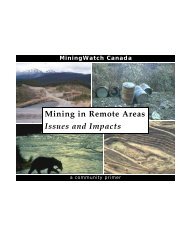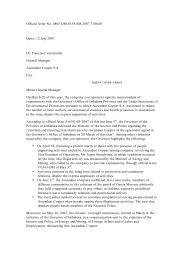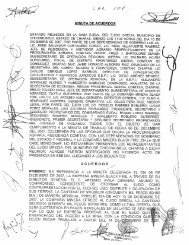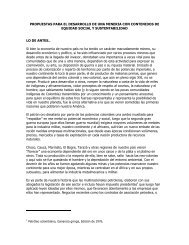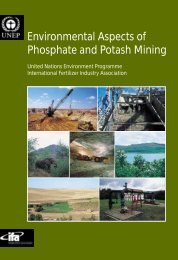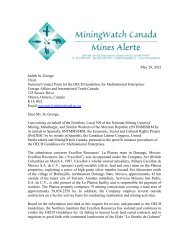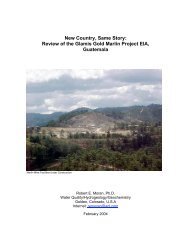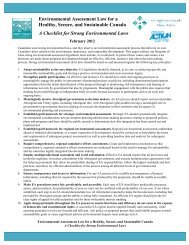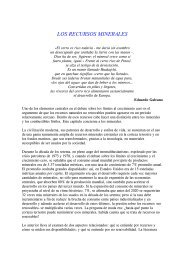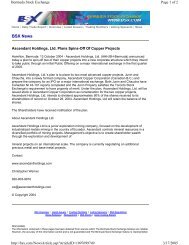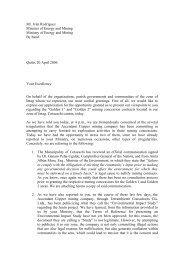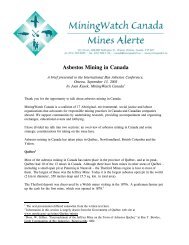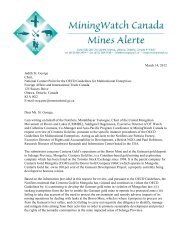OECD Complaint Against Barrick's Porgera Operations
OECD Complaint Against Barrick's Porgera Operations
OECD Complaint Against Barrick's Porgera Operations
You also want an ePaper? Increase the reach of your titles
YUMPU automatically turns print PDFs into web optimized ePapers that Google loves.
Ensure that in the future, where company personnel observe police activities thatappear to violate human rights, these are promptly recorded and reported to the stateauthorities, and where appropriate an investigation urged;Investigate allegations of rape by the Mobile Squad and push for investigation by thePNG government.• While awaiting a full investigation of the forced evictions and house burnings by thePNG government, and until such time as a relocation of all people living within thespecial mine lease area is undertaken, Barrick/PJV should provide new housing, clothing,resources to build new gardens, and basic provisions such as cookware to those familieswho were evicted and whose houses were burned down.• Provide compensation for those injured by Operation Ipili ’09, including for emotionaldistress resulting from these human rights abuses.• In accordance with <strong>OECD</strong> Guideline under section III Disclosure, paragraph 5. a),Barrick/PJV should make public reports on its performance with regard to the VoluntaryPrinciples at the PJV mine, including during and following Operation Ipili ’09.Main source: Amnesty International. 2010. Undermining Rights: Forced Evictions and PoliceBrutality Around the <strong>Porgera</strong> Gold Mine, Papua New Guinea. January.http://www.amnesty.org/en/library/info/ASA34/001/2010/en3. ENVIRONMENT: Riverine Tailings Disposal and Impacts on Air QualitySummary: In 2008, the <strong>Porgera</strong> Joint Venture mine disposed of 6.05 million tons of tailings and12.5 million tons of suspended sediment from the Anawe and Anjolek erodible waste dumps 110into the downstream <strong>Porgera</strong>, Lagaip and Strickland rivers systems which flow some 800kilometres from the Papua New Guinea highlands to the Gulf of Papua. This waste containsdissolved and sediment bound metals. 111 PJV has disposed of its mine waste in this fashion sincethe mine started operations in 1990. In order to meet Papua New Guinea water quality criteria,PJV requires a 165 kilometre-long “mixing zone” in the river system starting at the mine site. Inthis mixing zone water quality standards do not have to be met. Barrick/PJV has not mademonitoring data regarding river impacts publicly available. Nor has Barrick/PJV made availablea 2007 consultants study that considers alternatives to riverine disposal of waste. In addition toenvironmental impacts, potential human health impacts associated with the contamination of theriver systems have long been a concern, most acutely so in the reaches of the river near themine. 112 Barrick/PJV has not made a closure plan, or a rehabilitation plan for the impacted riversystem, available. In addition to concerns flowing from tailings and waste rock disposal,110 Strickland River 2009 Report Card. http://www.peakpng.org.pg/docs/Report%20Card%20Oct%2009-Final.pdf(accessed February 6, 2011)111 Metals include Arsenic (As), Cadmium (Cd), Copper (Cu), Lead (Pb), Mercury (Hg), Nickel (Ni), Silver (Ag),Zinc (Zn) and Cyanide (CN). Strickland River 2009 Report Card.http://www.peakpng.org.pg/docs/Report%20Card%20Oct%2009-Final.pdf112 On health risks see for example, Shearman, Philip. 2001. Giving away another river: an analysis of the impacts ofthe <strong>Porgera</strong> mine on the Strickland River system. In Mining in Papua New Guinea: Analysis and PolicyImplications. B.Y. Imbun and P.A. McGavin, eds. Pp. 181-183.23



